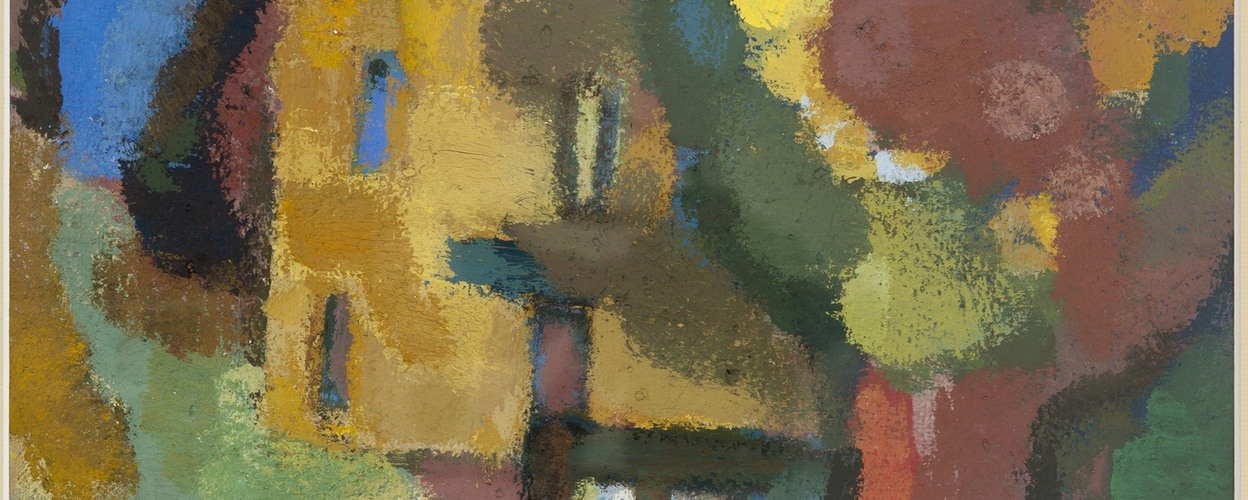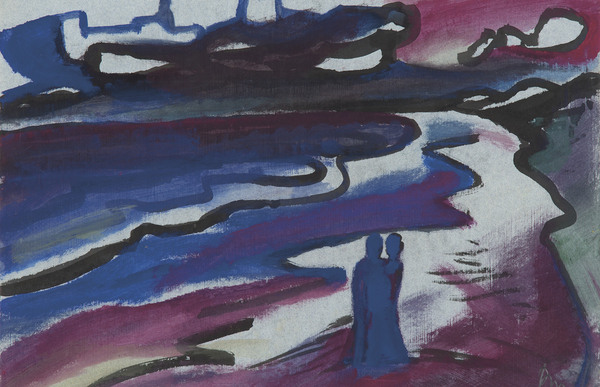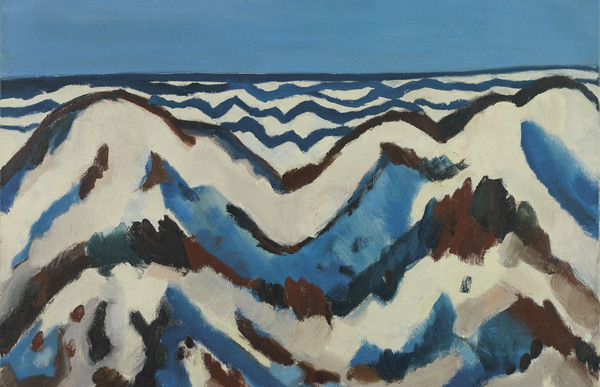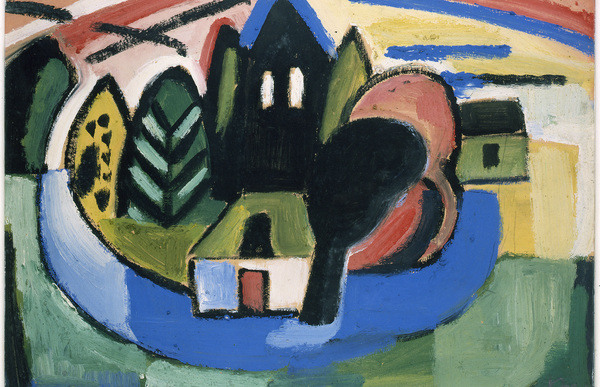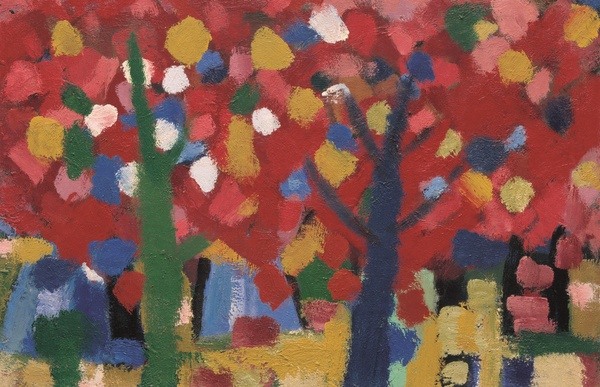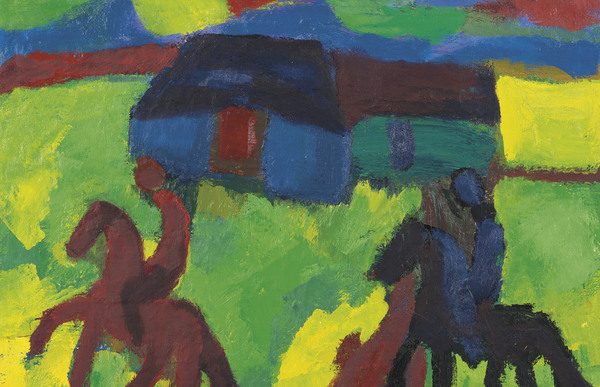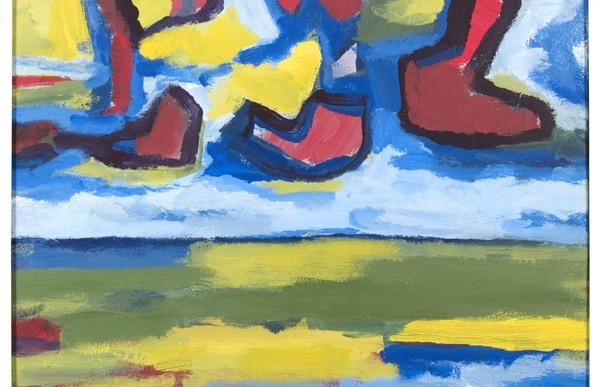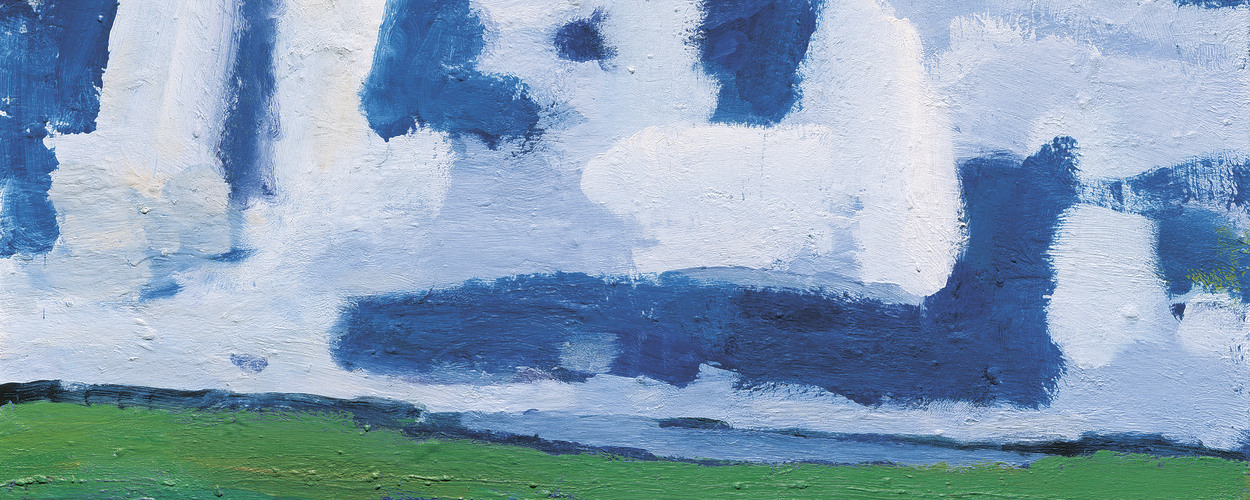people
In addition to the familiar cows, horses and landscapes, Benner also paints people. He does this in different styles. In Amsterdam he lives opposite a primary school where Benner sees children walking around with decorated sticks just before Easter. It inspires him to make colorful paintings of children. Occasionally he paints a portrait such as Woman in Garden (1957). It is not a realistic portrait, this figure is not recognizable as a person. Benner paints his impression of the woman in the garden in expressive strokes of colour.
the expanse of the landscape
In addition to familiar subjects, Benner increasingly focuses on the vastness of the landscape. From 1971 he often stays in Gaasterland, in a house belonging to the Benner family. Sitting on a dike, he draws and paints the environment. His love for nature culminates in these years: paintings with thin layers of paint in red, yellow, white, blue and green. Spring (1970), is one of those highlights. Horses, cows and figures keep his attention, but it is also the land, the sky and the water that he paints.
Throughout his life, Benner painted the same subjects in different styles and with different types of paint and supports. Searching for the most striking representation of his feeling and his love for nature. Benner has always seen the personal and that 'what is real' as the most important in his work. It is the driving force behind his quest.
“Look, you have to think like this. I'm not painting a case. I don't care about that thing or anything that's in the painting. I don't have to sit on the land to sketch it. I do what I feel. You should always do what is real.”
Gerrit Benner dies in 1981 at the age of 84 due to cardiac arrest.



